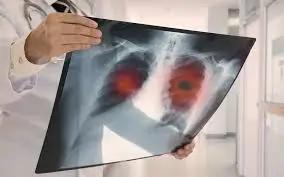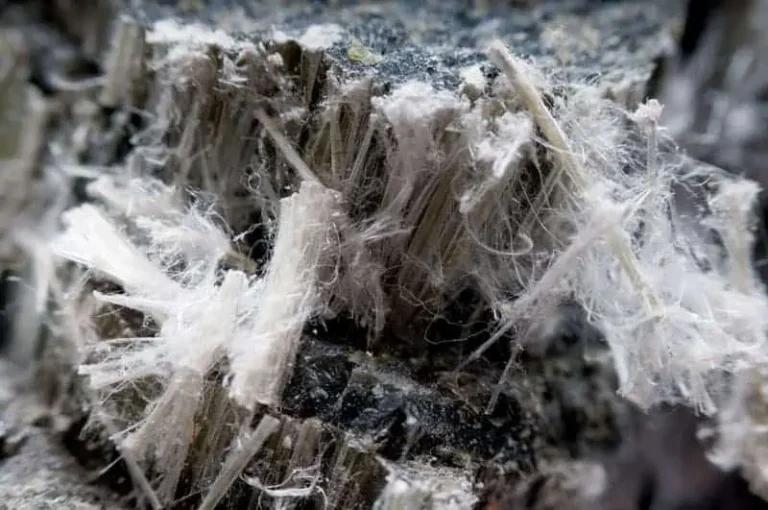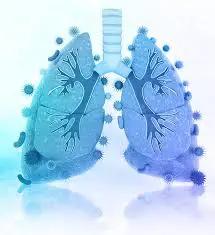
September 17, 2025 (Current Version)
March 28, 2025
Asbestosis, a chronic and debilitating lung disease, has long been a source of concern for individuals with occupational asbestos exposure. It is caused by breathing tiny asbestos fibres into the lungs when asbestos-containing material is cut or ground. The fibres scar the inside of the lungs, causing breathlessness.
Asbestosis is linked to a high risk of developing lung cancer and mesothelioma. Recognising the importance of early detection, healthcare professionals have developed diagnostic tools to identify asbestosis, allowing for timely intervention and the effective management of this complex disorder.
Understanding asbestosis
Common symptoms of asbestosis include shortness of breath, persistent cough, wheezing, and extreme tiredness. These early warning signs often appear decades after the initial asbestos exposure, making the condition particularly challenging to diagnose. In addition, individuals with a history of smoking or pre-existing lung conditions have a higher risk of developing asbestosis, further complicating the diagnostic process.
Physical examination findings
In the first instance, a physical examination of individuals with asbestosis may reveal a crackling sound while inhaling. A healthcare professional will use a stethoscope to listen carefully to the lungs. Additionally, some patients may exhibit clubbing of the fingertips, a condition characterised by the thickening and rounding of the nails, which can be a sign of underlying lung disease.
Chest imaging
The main way to diagnose asbestosis is by a thorough examination of the patient’s chest through imaging techniques. Chest X-rays can reveal characteristic patterns of interstitial fibrosis and pleural thickening, classic signs of the disease.
Computed Tomography (CT) scans
Computed tomography (CT) scans have emerged as invaluable diagnostic aids in the assessment of asbestosis. These imaging techniques provide a more detailed and precise view of the lung structures, allowing healthcare providers to identify early-stage parenchymal abnormalities and to distinguish between asbestos-related pleural changes and other conditions.
Magnetic Resonance Imaging (MRI)
Magnetic resonance imaging (MRI) can serve as a complementary diagnostic tool in cases where CT scans are inconclusive or contraindicated. MRI’s superior soft tissue contrast and the ability to detect subtle changes in lung architecture may prove beneficial in certain clinical scenarios, particularly when evaluating the extent and progression of asbestos-related lung disease.
Pulmonary function tests (lung function tests)
Alongside imaging techniques, pulmonary function tests play a crucial role in the diagnosis of asbestosis. These assessments measure lung health, providing healthcare professionals with information about respiratory impairment.
Spirometry
Spirometry, a fundamental pulmonary function test, measures the volume and rate of airflow during inhalation and exhalation. In individuals with asbestosis, spirometry may reveal a reduction in FVC, often with a normal or near-normal forced expiratory volume in one second (FEV1), indicating a restrictive ventilatory defect.
Diffusing capacity (DLCO)
The diffusing capacity for carbon monoxide (DLCO) test, provides healthcare professionals with a measure of the lungs’ ability to transfer oxygen from the alveoli to the bloodstream. In asbestosis, DLCO is reduced, reflecting the impaired gas exchange capacity of the damaged lung tissue.
Further evaluation
In some cases, healthcare providers may recommend more invasive diagnostic procedures.
Bronchoscopy
Bronchoscopy involves the insertion of a thin, flexible tube with a camera and biopsy tools into the patient’s airways. This technique allows healthcare professionals to visually inspect the lungs and obtain tissue samples for further analysis, which can be particularly useful in cases where the diagnosis remains uncertain.
Lung biopsy
In rare instances, a lung biopsy may be necessary to confirm asbestosis. This invasive procedure involves the removal of a small sample of lung tissue, which is then examined under a microscope for the presence of asbestos fibres and characteristic patterns of interstitial fibrosis.
Other diagnostic tests
While the core diagnostic methods outlined above form the foundation of asbestosis detection, healthcare professionals may also use other techniques to enhance the accuracy and comprehensiveness of the diagnostic process.
Bronchoalveolar Lavage (BAL)
Bronchoalveolar lavage (BAL) is a procedure in which a saline solution is instilled into the lungs and then aspirated, allowing for the collection and analysis of cells and other materials present in the alveoli. This can be used to quantify the presence and type of asbestos fibers in the lungs, providing valuable information to support the diagnosis of asbestosis.
Blood tests
Although blood tests do not directly diagnose asbestosis, they can be used to rule out other causes of the patient’s symptoms, such as autoimmune or infectious diseases. Healthcare professionals may order blood tests to ensure a comprehensive evaluation and eliminate alternative diagnoses.
Multidisciplinary approach
Diagnosing asbestosis requires a joint effort from healthcare professionals, including pulmonologists, radiologists, and occupational health specialists. By using the findings from all test results and procedures, experts can develop an understanding of the patient’s condition, allowing them to make an accurate diagnosis and tailor an appropriate treatment plan.
Challenges and limitations
Despite the availability of advanced diagnostic tools, identification of asbestosis can still present significant challenges. The long latency period between asbestos exposure and the onset of symptoms, as well as the potential for overlap with other respiratory conditions, can complicate the diagnostic process. Additionally, the interpretation of imaging findings and pulmonary function tests may require specialised expertise, underscoring the importance of referral to healthcare providers with experience in managing asbestos-related diseases.
Conclusion
Early detection of asbestosis is crucial, as timely intervention can significantly improve the patient’s quality of life, reduce symptoms of asbestosis and potentially slow the progression of the disease. By using all diagnostic tools and techniques available, healthcare professionals can work to identify asbestosis in its earliest stages, to start appropriate treatment and the management of associated complications.
Key takeaways
- Asbestosis is a chronic lung disease caused by long-term exposure to asbestos fibers, leading to scarring and impaired respiratory function
- Chest imaging, including X-rays and CT/HRCT scans, is the foundation of asbestosis diagnosis
- Pulmonary function tests, such as spirometry and DLCO, assess the degree of respiratory impairment
- Invasive procedures like bronchoscopy and lung biopsy may be necessary in some cases to confirm the diagnosis or rule out other conditions
- A multidisciplinary approach, involving healthcare professionals with expertise in asbestos-related diseases is crucial
- Early detection and ongoing monitoring are essential to reduce the progression of asbestosis and improve patient quality of life
Sources
- Asbestosis – Diagnosis & treatment – Mayo Clinic
- Asbestos Toxicity: Clinical Assessment – Tests – Environmental Medicine – ATSDR
- Asbestosis: Causes, Symptoms, Diagnosis & Treatment
- Asbestosis – NHS
Medical Disclaimer
NowPatient has taken all reasonable steps to ensure that all material is factually accurate, complete, and current. However, the knowledge and experience of a qualified healthcare professional should always be sought after instead of using the information on this page. Before taking any drug, you should always speak to your doctor or another qualified healthcare provider.
The information provided here about medications is subject to change and is not meant to include all uses, precautions, warnings, directions, drug interactions, allergic reactions, or negative effects. The absence of warnings or other information for a particular medication does not imply that the medication or medication combination is appropriate for all patients or for all possible purposes.






